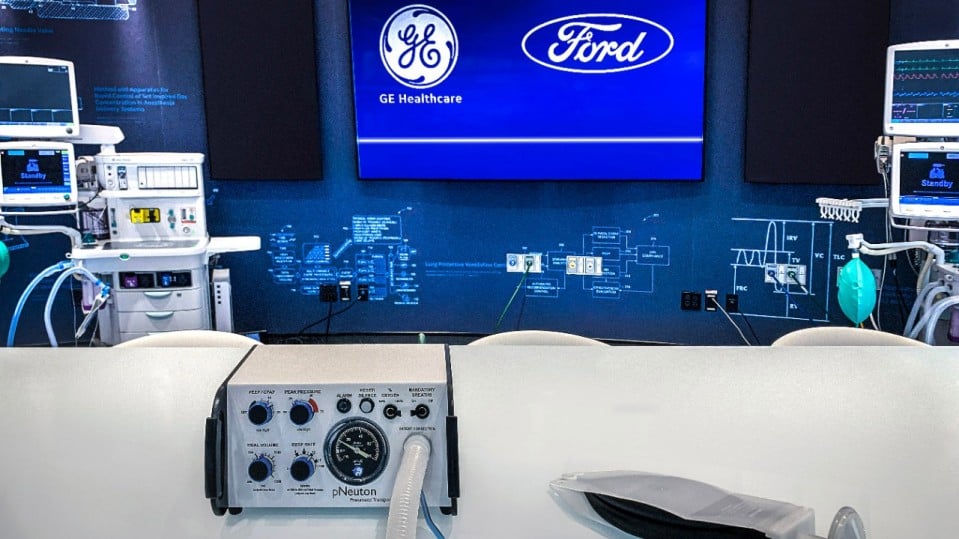

Biotechnology
Ventilator firms are racing to boost production as the pandemic accelerates
But it’s not clear whether unusual partnerships and shared designs will be enough to stay ahead of escalating coronavirus infections.

Major manufacturers are striking unusual partnerships and sharing designs to rapidly boost production of ventilators for critically ill covid-19 patients, though it still isn’t clear the effort will meet the needs of hospitals as infection totals soar in the coming weeks.
Having these medical instruments available can represent the difference between life and death for patients struggling with acute respiratory problems, helping them continue to breathe and recover after their lungs partially fill with fluid. But acute covid-19 caseloads have already outstripped the availability of ventilators in a handful of nations struggling with major outbreaks, and officials fear they’re running critically short in several US regions.
You can read all our coverage of the coronavirus/covid-19 outbreak for free, and also sign up for our coronavirus newsletter. But please consider subscribing to support our nonprofit journalism.
As of February, the US had nearly 170,000 ventilators that could be made available to patients, whereas an outbreak as severe as the 1918 influenza pandemic would require more than 740,000.
New York governor Andrew Cuomo says his state alone may need 30,000 ventilators to treat patients as caseloads peak in the coming weeks. New York, the epicenter of the US outbreak with more than 67,000 positive cases and more than 1,200 deaths, has about 12,000 now, he has said.
One of the world’s largest ventilator companies, Medtronic, said on March 18 that it had already increased production by more than 40% and was “on track” to more than double manufacturing capacity. The company’s chief executive, Omar Ishrak, told CNBC last week that Tesla would produce one of its top-end ventilator models at the electric-vehicle company’s solar panel plant in Buffalo, New York. (Medtronic is officially headquartered in Dublin, Ireland, but much of its operations and sales are in the US.)
Then on Monday, Medtronic announced plans to openly share its designs for one ventilator model, in a move that would be hard to imagine outside a public health emergency. The company said it hopes that releasing the specifications for its portable ventilator, which it sells in 35 nations, could allow academics, startups, or other manufacturers with capacity to quickly ramp up output of the machines.
To be sure, it’s a compact, 10-year old model, not one of Medtronic’s “high performance” lines. It’s also unclear how fast other groups could make machines based on the designs, given the serious challenges involved in sourcing components, getting manufacturing online, and handling regulatory issues, industry observers say. The move, though, could help some patients, even if relatively few ventilators are produced.
The company didn’t respond to an inquiry from MIT Technology Review.
Also on Monday, Ford said that it will be able to crank out 50,000 ventilators in the next 100 days, and 30,000 per month thereafter, through a cooperation with GE Healthcare, another major ventilator maker. The company is licensing the design of a ventilator produced by a small third firm, Airon.
Similarly, GM said previously it was partnering with Ventec Life Systems of Bothell, Washington, to increase ventilator manufacturing as part of a “coordinated private-sector response” called StopTheSpread.org. The companies said they’ll deliver the first devices next month and should be able to ramp up to 10,000 per month.
Meanwhile, several academic groups, including researchers at MIT and the University of Minnesota, have also said they’re hoping to publish open-source designs for low-cost ventilators. A number of engineers and home hobbyists have been producing and sharing designs for rudimentary devices as well.
The US Food and Drug Administration recently updated its enforcement policies for ventilators and other respiratory devices, allowing for limited modifications without additional regulatory submissions during the public emergency and providing guidance for companies that don’t usually produce medical devices to step in at this critical moment.
After going back and forth on the issue, President Trump late last week authorized the use of the Defense Production Act to compel American businesses to produce more ventilators, and said the federal government will buy thousands of them.
But Trump’s move, like the efforts of the industry and academia, is likely coming far too late. Many fear that ventilator production won’t accelerate as rapidly as the pandemic.